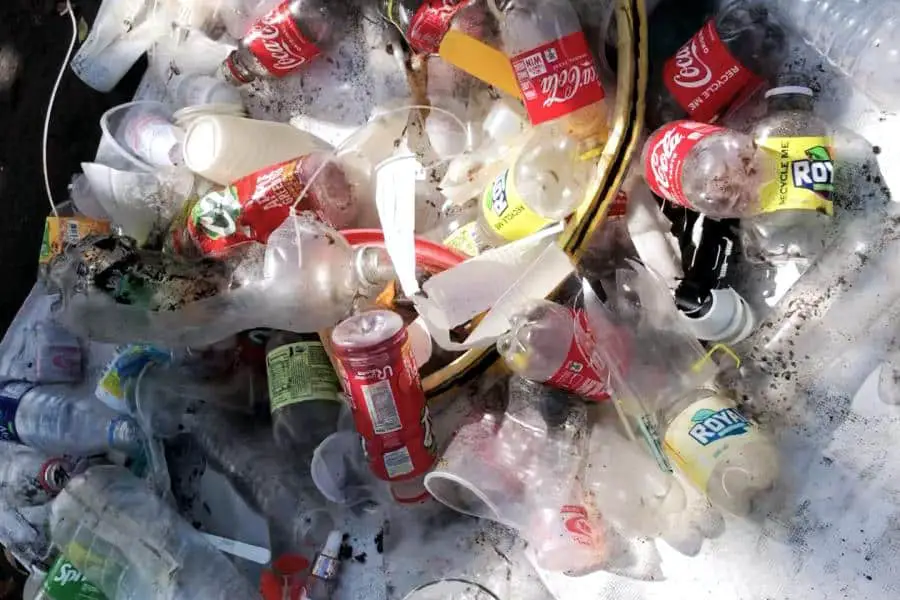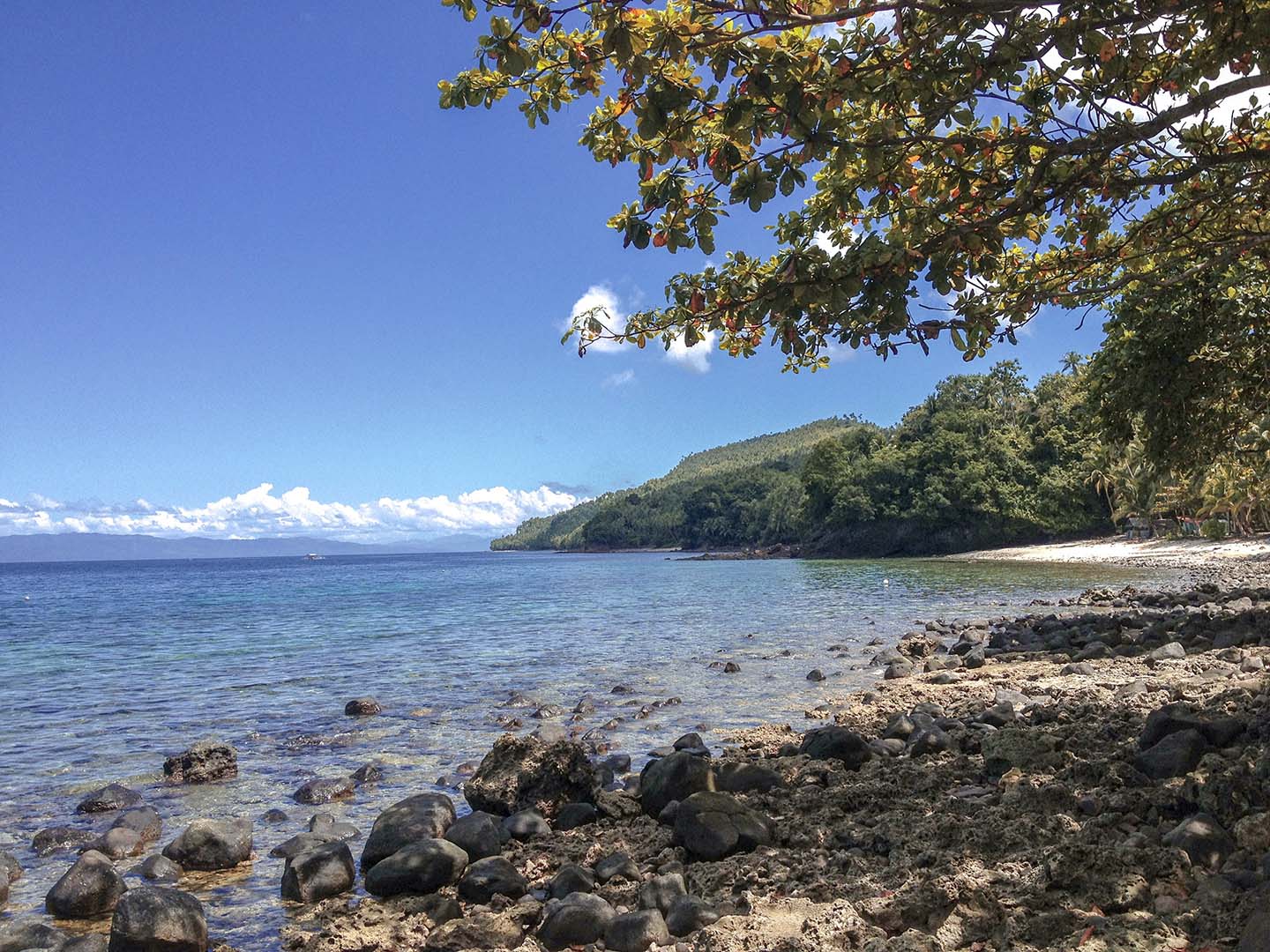I have done my share of beach and ocean cleanups. When I go on beach trips I try to pick up what I can to reduce the plastic that enters the ocean. Sometimes I also join cleanup events organized by other people. Whether it’s on my own or with other people, doing beach cleanup makes me feel like I’m making a difference.
But lately, with the amount of trash that I keep seeing in coastal areas or even in the ocean, it makes me wonder if I am really making a difference. When you keep seeing plastic on every beach and every dive, you can get cynical.
I take one out and three more show up.
It’s neverending!
In fact, in my last International Coastal Cleanup in Anilao, I remember having a conversation with a friend about these events and how effective they are. We spend a day cleaning a beach or a dive site and as soon as the tides change, a new batch of garbage gets dragged in.
What is the point of all these efforts?
What is the importance of beach cleanups?
We concluded that beach cleanups were a good way to raise awareness and inspire others to take action on a personal level.
It also gave us a sense of community. Ocean plastic was everyone’s problem and we should find solutions together.
And while we can’t take out all the trash in the ocean, it was still one less trash that could harm wildlife. If I take out one plastic, I could be saving one sea turtle from eating it.
So it was not all for nothing.
While volunteering for Marine Conservation Philippines in March 2022, I participated in a beach cleanup in Negros Oriental. This was something they do regularly as an NGO focused on conservation. As participants in their 2-week volunteer program, we got to experience how to do a coastal cleanup the MCP way!
At first, I thought that this was just to create awareness in the local community and to start a conversation with us volunteers about plastic pollution. And while it did exactly that, the beach cleanup went beyond that.
Marine Conservation Philippines showed us a different way how to do a beach cleanup.
For me, this was the best beach cleanup I’ve done so far. I felt like I wasn’t just a glorified garbage collector but I was actually contributing to a bigger picture.
So what exactly made this beach cleanup different from all the other cleanups I’ve done?
This beach cleanup wasn’t just about picking up trash, it was about gathering data that could help in finding solutions to the ocean plastic problems.
So, let me tell you exactly what we did.
How to do a beach cleanup
Step 1: Choose a location
The staff of Marine Conservation Philippines- Laura, Alfred, and Cesar, had pre-selected a site for us to visit. MCP has several cleanup sites they visit on rotation and that week we were assigned to Ducomi Pier in Bacong.
From Zamboanguita, where the MCP camp is based, we drove to Dauin and parked in a lot across Ducomi (Dumaguete Coconut Mills Inc), a company that manufactures coconut products.
The beach for our cleanup is by Ducomi Pier which gets tons of vehicle and foot traffic. This meant a lot of trash too!
Step 2: Conduct a briefing
We began with a briefing, headed by Laura. She explained how they properly do a beach cleanup.
After doing so many beach cleanups in Negros Oriental, year after year, they have basically mastered how to do a beach cleanup. This beach cleanup method is what MCP follows for consistency.
We were all given sacks but she assigned 2 people to concentrate on collecting soft and hard plastics. Based on previous beach cleanups this was the dominant trash category in the area so Laura assigned someone to focus on this. It is possible that in some places a person is assigned to gather another category like glass or textile instead.
Everyone else who is not assigned a category is called a “sweeper” whose main task is to collect all the other garbage on the beach.
The beach cleanup is done at a very specific 150-meter distance and within a 45-minute duration of a given site. In our case, we clean up the beach that was within 150 meters from Ducomi Pier.
The area covered and time can vary based on your personal preference, this was just the standard MCP followed so they can compare data from one clean up to the next.
Step 3: Beach cleanup time!
Once Laura has marked the starting point, the soft and hard plastic collectors start first, grabbing what they can that belongs to their category. The sweepers follow to gather the rest of the garbage that was left.
If the sweepers find soft or hard plastic, they are also tasked to put it on the designated sacks to make it easy for sorting later on.
It is also possible to do a beach cleanup where it is “free for all.” No assignments. Just grab what you can and sort it out later.
Step 4: Sort the trash
Once the area is cleared of trash or if it’s been 45 minutes, everyone heads back to the parking lot to sort the trash collected. To make it easier, a mat is laid out and category signages are placed to help identify what we’ve collected.
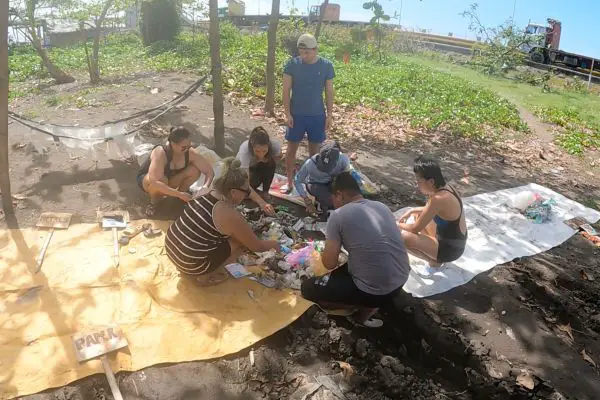
Soft plastics are dumped in one pile and hard plastics are dumped into another pile. The contents from the sweepers’ trash bags are dumped in the middle so they can be categorized into paper, rubber, metal, glass, foam, textiles, and others.
Step 5: Record what you find
Once we’ve sorted the trash into their specific categories we then log what we find.
Using a form that MCP created, we break down each category into more specific subcategories.
For instance, hard plastic are separated into plastic bottles, bottle caps, plastic cutlery, plastic cups, and so on and so forth. Then we count the pieces and weigh each subcategory.
The same process is done for the soft plastic, rubber, glass, metals, and other weird items we find.
We fill out the form with the quantity and weight.
MCP modified their form to add trash subcategories they noticed were prevalent in the local area. This is to help them assess local issues and to compare results from one beach cleanup to the next.
MCP’s beach cleanup data form looks like:
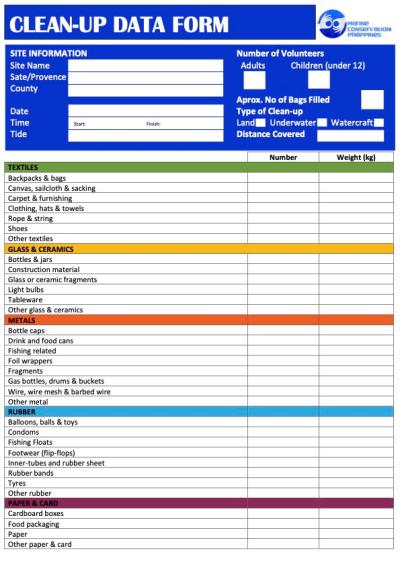
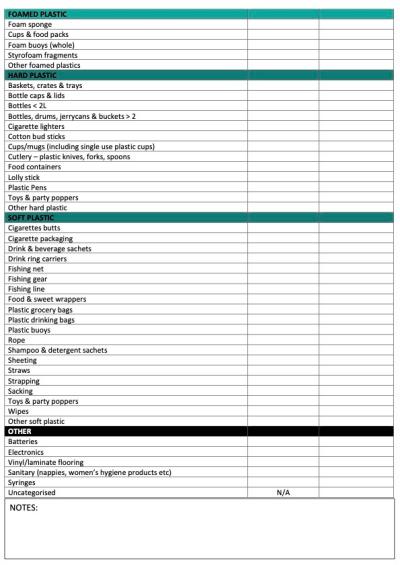
The data collected is also submitted to Ocean Conservancy. But it is not as comprehensive as MCP’s.
Here is a sample of the trash data log that you fill out if you want to support Ocean Conservancy’s citizen science program.
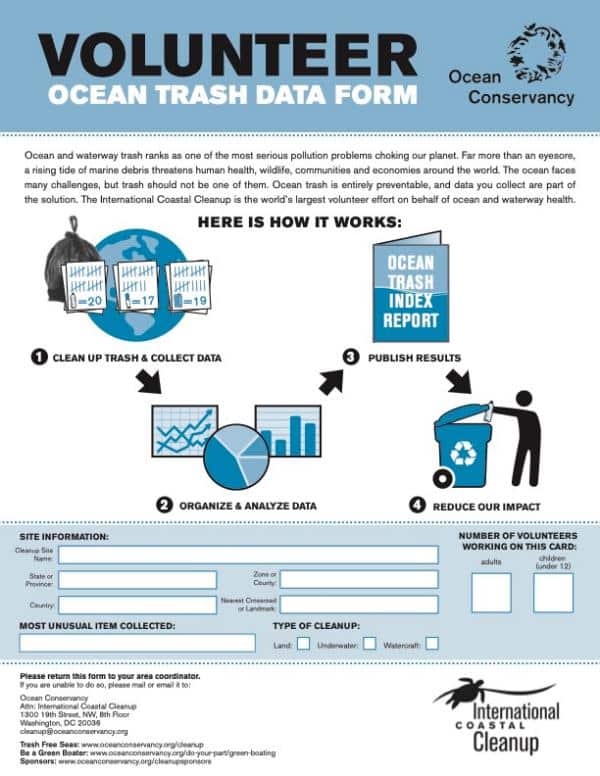
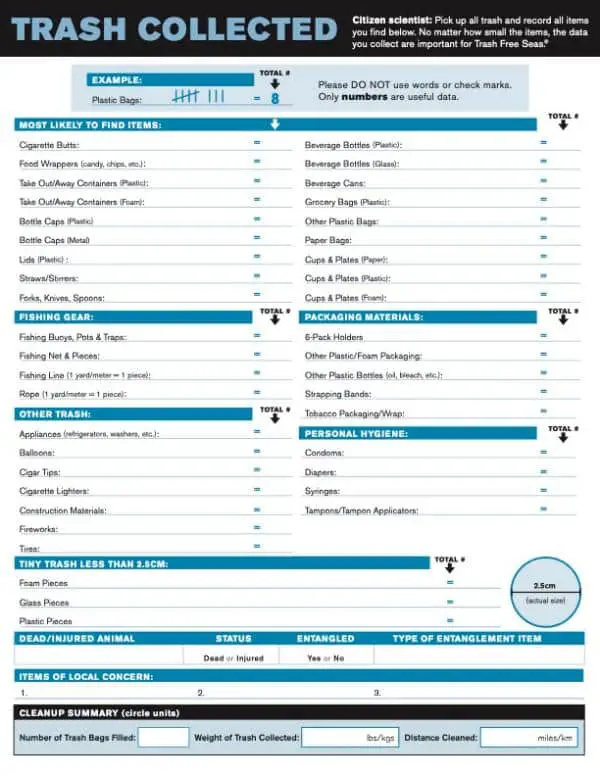
It is a very tedious process but by doing this we get a clearer picture of what kind of ocean trash is more common in the area.
If you would like to do a trash audit and contribute to Ocean Conservancy, you can download the trash data form here.
Step 6: Dispose of trash properly
After counting and weighing the trash, we sort them into piles of recyclables and non-recyclables.
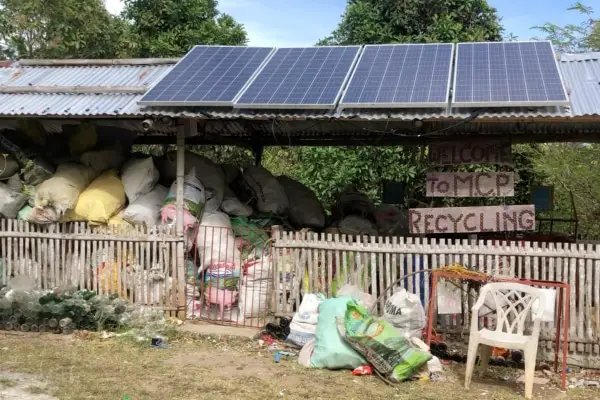
Each locality might have a different way of disposing of its trash. And yes, some might even make its ways back to the ocean. But do what you can base on what is available to you.
Step 7: Submit the data to Ocean Conservancy
The last task on how to do a beach cleanup is to submit the findings to Ocean Conservancy. They require you to record the time spent, the number of people involved in the beach cleanup, the detail in units and the weight of the debris found per various categories.
According to Laura, MCP has an agreement with Ocean Conservancy to submit the data they collect in bulk every 6 months. Because of poor internet connectivity in the base and the amount of data being collected by MCP, Ocean Conservancy encodes the data themselves.
Ocean Conservancy has also developed an app to make it easy for ocean advocates to submit the data right from their mobile phones. The Clean Swell App allows you to instantaneously contribute to Ocean Conservancy’s global ocean trash database.
So even if in a remote area you can participate in a beach cleanup and document it with ease.
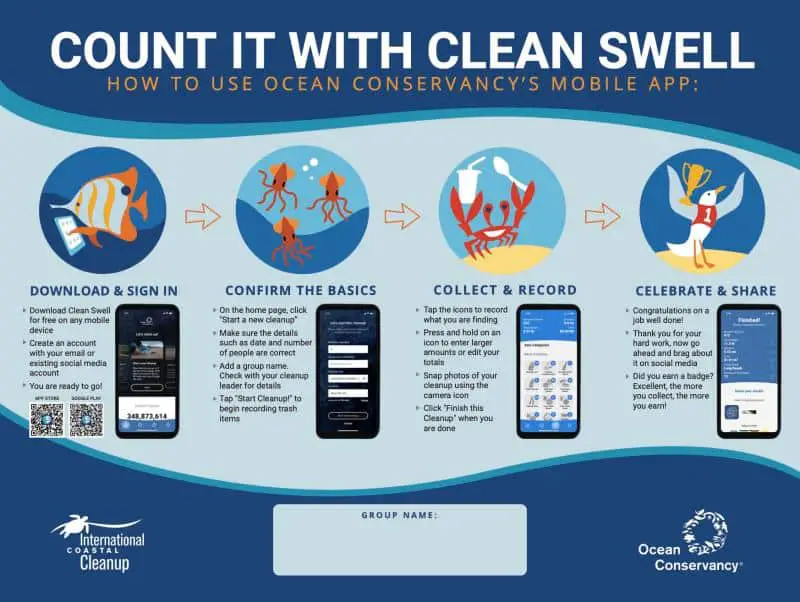
Additional tips when doing a beach cleanup
- Wear reefsafe sunscreen or sun protection like caps, long sleeves, coverups.
- Wear closed and sturdy shoes to avoid foot injuries.
- Organize your cleanup early morning or late afternoon so it doesn’t get too hot.
- Use protective gear like gloves and tongs to pick up trash.
- Hydrate, hydrate, hydrate! Bring your own reusable water bottle, of course!
- Take breaks if you need to.
- Have fun!
- Post on social media to create awareness about ocean plastic
Impact of beach cleanups when done properly
This beach cleanup really opened my eyes to a different side of picking up trash in coastal areas. It gave me a bigger purpose that I was contributing to a study or research that could potentially change people’s minds where it matters.
When Ocean Conservancy collates all the plastic profiles from all over the world, they share this with scientists and policymakers. Every year they publish reports and their findings and this is used to not just create awareness but to find solutions to reduce the impact of plastic on our planet.
On a local level, by finding out what plastic or trash is most common in an area, MCP can propose solutions or give recommendations to the local government to take action about the plastic problem that plagues their jurisdiction.
For instance, if one beach seems to have a lot of plastic straws based on the data gathered, MCP can propose to the municipality to create an ordinance banning the use of plastic straws.
Each area will have its own plastic issues to address and if we want to find the right solutions then it helps to have the data to back it.
With the Philippines being one of the biggest contributors to ocean plastic, I think it’s important that this kind of data is collected and then presented to people who can enact change.
Companies who are producing or using plastic can be pressured to change their product. Government officials can create better laws that serve both the community and the environment. Even at a personal level, data, when presented correctly and maybe even creatively, can change someone’s mind about using plastic.
So the next time you do a beach cleanup on your own or in events like World Ocean Day or International Coastal Cleanup, don’t just stop at gathering the trash. Do a trash audit and do the extra steps of submitting your findings to organizations like Ocean Conservancy.
Got Pinterest? Pin this for later!
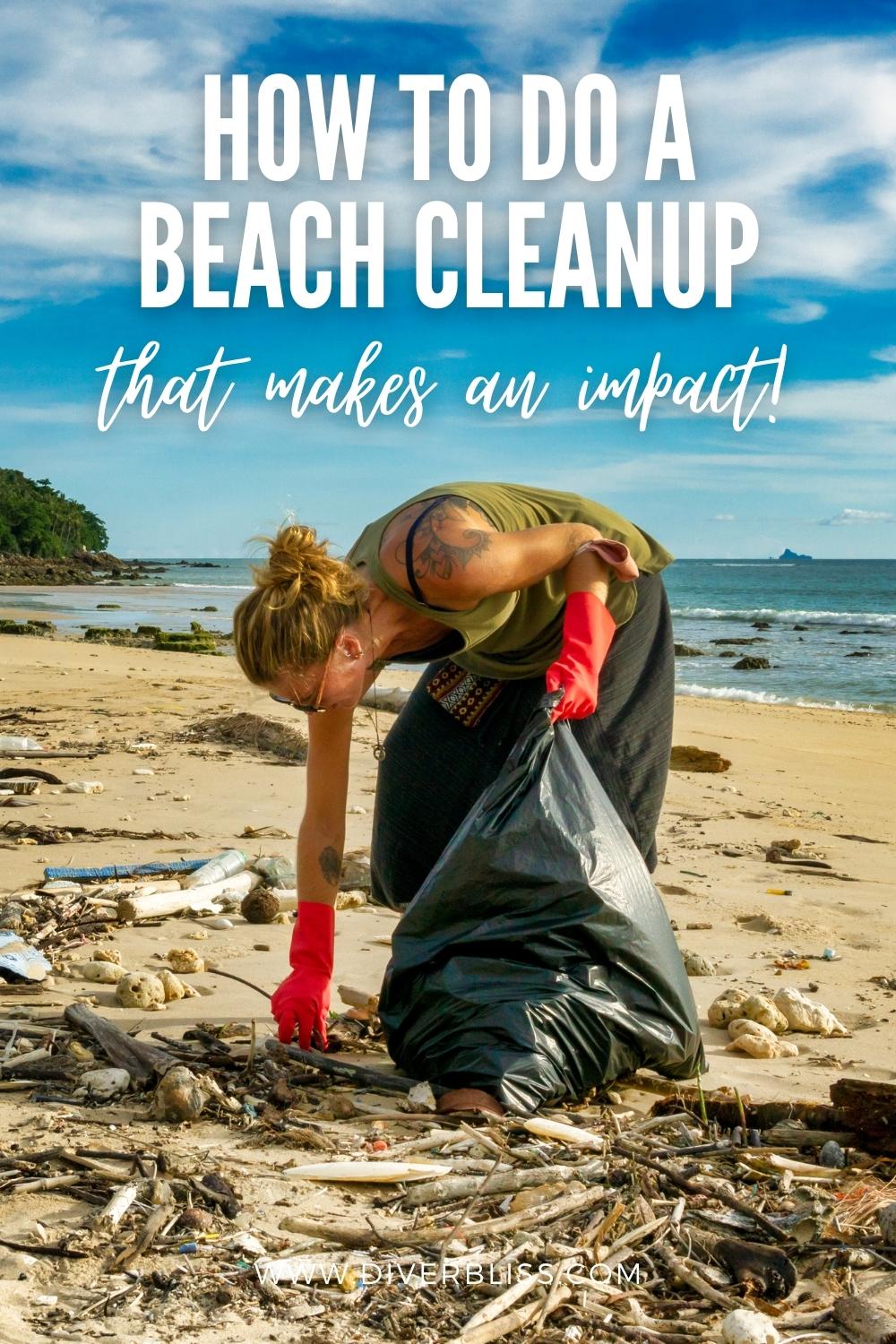
Have you participated in a beach cleanup before? How did you do it? Leave a comment below!
